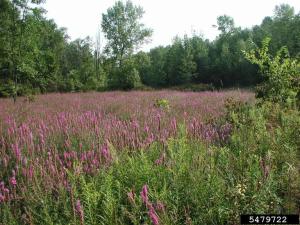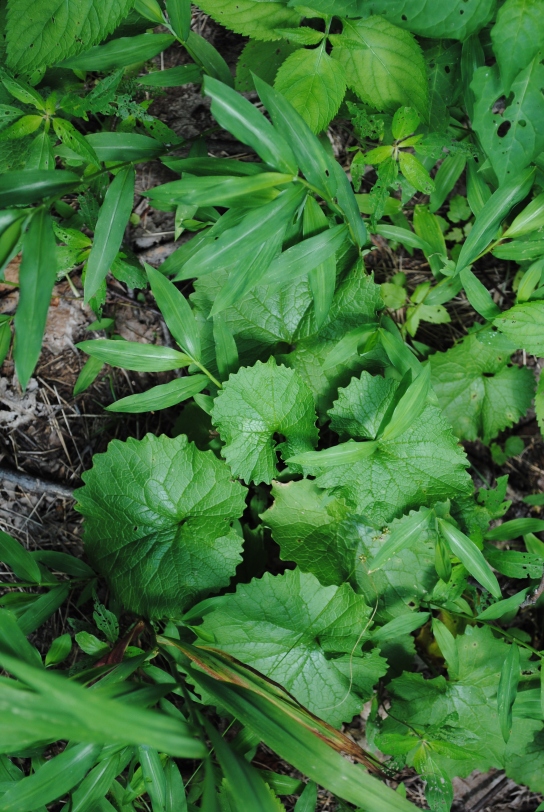Blog Archives
Great Lakes Phragmites Collaborative Webinar Series
The Great Lakes Phragmites Collaborative webinar series has focused on invasive Phragmites in the Great Lakes region to encourage dialogue and technology transfer throughout the region. This series will include topics such as: Current research on Phragmites control, management techniques and case studies, monitoring and assessment protocols, mapping and tracking and regional management initiatives. Much of the information can help us understand phragmites management in southeast Ohio.
To access their past recordings, click on this link:
IPC invasive plant webinar series archive
I wanted to direct everyone to a valuable series of previously recorded invasive plant webinars. Content covered can be important to anyone, including private landowners, all the way up to regional managers of invasive plants. Check it out if you have some time. http://www.ipcwebsolutions.com/outreach.htm
Phenology update: Garlic Mustard
 Garlic mustard – Alliaria petiolata; Basal rosettes have normally grown enough to be easily spotted now. The garlic mustard in this photo is particularly robust. Also notice the Johnson grass in the background, and ground ivy in the front.
Garlic mustard – Alliaria petiolata; Basal rosettes have normally grown enough to be easily spotted now. The garlic mustard in this photo is particularly robust. Also notice the Johnson grass in the background, and ground ivy in the front.
new Aquatic Invaders guide – Crown of Continent
This guide wasn’t made for Ohio, but much of it is relavent. Check out the section on plants, most of these threaten Ohio.
Jen McBride, an environmental science graduate student, created a pocket guide titled “Aquatic Invasive Species Threatening the Crown of the Continent.” The tool aims to help identify and prevent aquatic invasive species from invading the Crown region. Species included in the guide were selected by agency professionals based on proximity to the Crown, potential impacts of invasion and likelihood of introduction. The 116-page guide will be distributed to land managers and others. View it online.
Beauty becomes the beast
 Have you been wondering what the dense stands of attractive purple flowers are that you’ve been seeing along roadsides and wet areas? It is probably purple loosestrife, a quite attractive plant. However, beneath this superficial beauty lies an aggressive, untamable beast. If left uncontrolled, purple loosestrife will take over our remaining wetlands.
Have you been wondering what the dense stands of attractive purple flowers are that you’ve been seeing along roadsides and wet areas? It is probably purple loosestrife, a quite attractive plant. However, beneath this superficial beauty lies an aggressive, untamable beast. If left uncontrolled, purple loosestrife will take over our remaining wetlands.
Native to Europe and Asia, purple loosestrife (Lythrum salicaria) was speculated to be first introduced to the United States from colonial settlers as ship ballast was unloaded from their sailing ships. Additionally, horticulturists imported seeds for landscaping and gardens.
Purple loosestrife grows in dense stands along waterways and wetlands, choking out native wetland species. Thick growth can reduce water flow by clogging drainage ditches. With a seed production as high as 2 million per plant, the ability to reproduce from fragments of its stem, and a high tolerance to water and variability to soils it has spread across most of the United States and can be found in many areas in Ohio. Once established, an individual plant can often live as long as 20 years.
 Showy magenta to purplish flowers with 5-7 petals on long 4- 18 inch spikes makes this an easy plant to identify from July to September. Leaves are attached to the stem in sets of two or three. Stems typically have 4 or 6 sides and are slightly hairy. In the fall, leaves turn vibrant red in color. Plants often have up to 50 stems of up to 8 feet tall, with the whole plant sometimes as wide as 5 feet. No other wetland plants will create dense stands and have purplish flowers.
Showy magenta to purplish flowers with 5-7 petals on long 4- 18 inch spikes makes this an easy plant to identify from July to September. Leaves are attached to the stem in sets of two or three. Stems typically have 4 or 6 sides and are slightly hairy. In the fall, leaves turn vibrant red in color. Plants often have up to 50 stems of up to 8 feet tall, with the whole plant sometimes as wide as 5 feet. No other wetland plants will create dense stands and have purplish flowers.
 Ohio regulations prohibit the sale of purple loosestrife without a special permit from the Director of the Department of Agriculture. Although some sterile varieties of purple loosestrife are available, they often produce viable seeds when cross pollinated with other cultivars. If the look of purple loosestrife is what you want for your landscape, play it safe and consider using these native alternatives: Blazing stars (Liatris spp.), bee balm (Monarda fistulosa), swamp verbena (Verbena hastata), joe-pye weed (Eutrochium fistulosum), and cardinalflower (Lobelia cardinalis).
Ohio regulations prohibit the sale of purple loosestrife without a special permit from the Director of the Department of Agriculture. Although some sterile varieties of purple loosestrife are available, they often produce viable seeds when cross pollinated with other cultivars. If the look of purple loosestrife is what you want for your landscape, play it safe and consider using these native alternatives: Blazing stars (Liatris spp.), bee balm (Monarda fistulosa), swamp verbena (Verbena hastata), joe-pye weed (Eutrochium fistulosum), and cardinalflower (Lobelia cardinalis).
You can find additional information here: http://www.nps.gov/plants/alien/fact/lysa1.htm. If you are interested in volunteering to map purple loosestrife this summer or have any additional questions contact Eric Boyda at appalachianohioweeds@gmail.com or 740-534-6578.
AOWCP installs billboard along the Ohio River
The Appalachian Ohio Weed Control Partnership along with Southern Indian Cooperative Invasives Management (http://www.sicim.info) and River to River Cooperative Weed Management Area (http://www.rtrcwma.org) have continued working together to address invasive plant issues along the Ohio River. Our partnership, Central Hardwoods Invasive Plant Network (CHIP-N) has partnered with the Ohio River Basin Fish Habitat Partnership and Wildlife Forever to install a billboard in Southern Ohio. We’ve had our billboard up along US 52 between Ashland, KY and Southpoint, OH for over a month. We should get anywhere from 800k-900k views over this time frame. Hopefully efforts like this help people realize the importance of cleaning boating gear before traveling to another body of water.
Brush off invasive species
Cleaning equipment and personal gear is an important preventative measure to reduce the spread of invasive plants. Follow this link for an article about how Minnesota is promoting this idea.
http://www.echopress.com/event/article/id/105045/
Hopefully we can get more individuals and organizations cleaning their equipment in Ohio.













